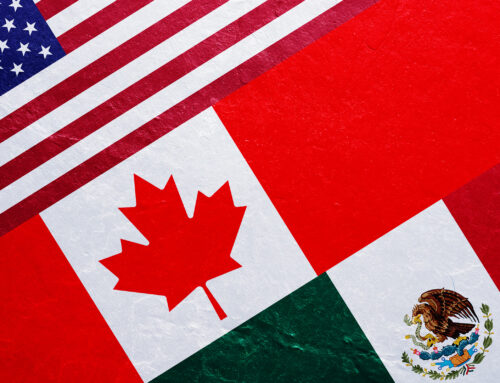Price actions are not unique
Companies are constantly testing the extent of their pricing power. Faced with rising costs for materials, transportation, and workers, companies are charging more for products from metal fasteners to Oreo cookies. The primary response to inflation is to become more efficient, but inflation is currently so high, that productivity alone won’t solve it. Of about a dozen large U.S. companies examined by The Wall Street Journal, most said they have succeeded in raising at least some prices but are unsure whether they can continue to do so. Several said they plan or hope to push additional price increases through. Fastenal charged its customers enough extra in the first half of the year to offset its own higher product costs. But the company warns its ability to keep pace with costs could lag in coming months.
For a variety of reasons, you might need to raise your prices. Inflation, expanded product lines, new features, and other factors may be to blame. Any business can suffer from stagnant pricing. In both B2B and B2C spaces, it will be beneficial if you explain the rationale for the price increase to your customers. Negative trends may result from price increases made without notifying customers. Customers need to comprehend why the price was raised. Therefore, you need to communicate the reasons for the price rise. Price adjustments necessitate a strategic approach that when executed correctly, can improve customer relations and total margins.
In this article, we will tackle how to get everyone on board for price increases from strategies to execution, and objections.
Enforce efficient ordering and fulfillment to lower cost-to-serve
Here’s how our team helped recover $17 million by reducing our client’s cost-to-serve. The key areas we look at today are differences in order frequency, minimum order quantities, freight policies, and order fulfillment. Administration of invoices, pick/pack, and shipping on orders below $250 are all likely unprofitable. In some industries, the breakeven figure is higher. A price waterfall analysis can help you to identify other pricing leakages (areas where you’re losing money as part of your cost to serve) if it is a bottoms-up analysis. This can be used to understand the causes of the differences in pricing performance across different customers and channels. This analysis should include a look at individual transactions fulfillment by the order that includes the walk from list price, invoice price, net price, and down-to-pocket margin. You can almost always find ways to lower your cost to serve instead of cutting budgets with the added benefit of changing behavior to lower complexity costs and better servicing key customers. Doing so will allow you to achieve the same profitability as a small price change. In today’s market conditions, this may also be an easier place to start such that any price moves are not lost to margin leakages.
Consider order behavior
Explore differences between contracts, orders, and the number of invoices tied to fulfillment and you may find significant variances. Many businesses discover there is a very high percentage of small orders that go unnoticed. When you reveal the true cost to serve each customer, you’ll uncover opportunities where you can implement targeted changes to pricing. Consider building a playbook of trade-offs and a give/gets strategy rooted in value-based pricing to negotiate new surcharges, fees, or policies around the following areas.
Temporary fees/ surcharge tied to cost shock
In our previous Cost Shocks, Inflation and Supply Shortages article, we noted adding surcharges can help you cover costs, and while they’re not likely to increase your profits, they can help you maintain revenue during times of significant commodity price fluctuations. Many companies have successfully added on a surcharge to help deal with tariffs. This solution works when the price increase is expected to be temporary. When the added cost is removed, then the surcharge disappears.
5 steps to execute a price increase

- Prepare and motivate your sales team
- Be Prepared to defend your price.
- Collect objections that you expect to receive
- Prepare responses to handle those objections
- Prepare give/gets prior to the customer meeting
Overcoming Objections
There are three types of price objections:
- Fairness – based on a “sense” of fairness
- Negotiation – objections based on trying to get a better deal
- Value – objections based on comparison to your competitors
To be effective at handling these objections, the first thing to understand is that they are very different and require different responses. Let’s dive deeper.
Responding to Fairness Objections: Be Prepared!
The customer’s goal is to make the salesperson feel uncomfortable and have no negotiating power. The response – reiterate all the high-value products and services.
Responding to Negotiation Objections: Explore & Map the Buying Center!
The customer’s goal is to get more value at a lower price. Declarations like:
- Angry statements or “threats”
- Assert product is a commodity
- Report what the cost or price should be
- Inform you of 3+ quotes
The advantage – the most important metric for procurement is secured supply.
Responding to Value Objections: Force Trade-offs!
The customer’s goal is the financial value from their suppliers and looking to solve true problems
- Start: Emphasize the value of your offer and why the price is justified
- Bottom Line: Vary products and solutions, not just price. If possible, try to add value to maintain the price increase
In Summary
- Customers want the best value, not necessarily the best price. Know what kind of customer you are dealing with
- For existing customers, remember they WANT to do business with you…at the lowest price they can get
- Quality and supply certainty is the most important goal for every procurement team. “If you are not able to deliver and they need to shut down a production line they will get fired. They won’t get fired for paying a penny to two more.”
- Our job is to justify the price based on the value we deliver. Often customers do not know or purposely ignore this. This includes the product, services, support, and terms and conditions we offer.
- Getting a lower price from a competitor is not the same as getting the “same value” at a lower price. Know and communicate our unique value proposition
Reach out to Iris Pricing Solutions for expert guidance as you navigate current uncertainties. We collaborate with pricing executives and their teams to develop smart pricing plans that will help them navigate difficult economic conditions.





